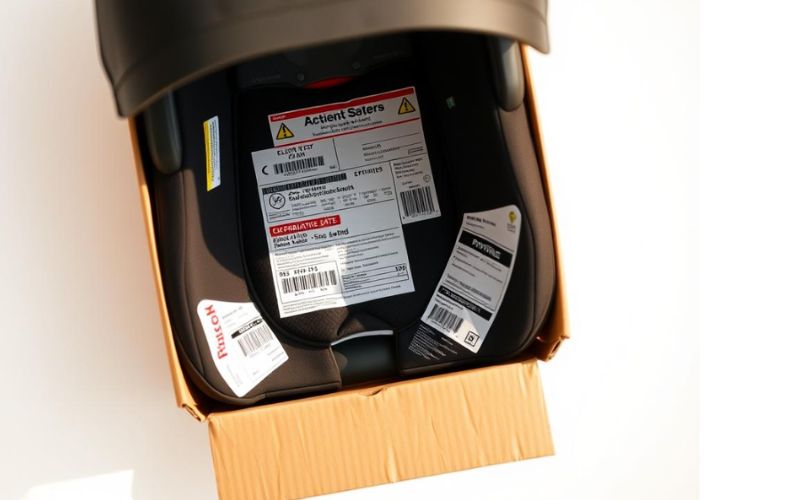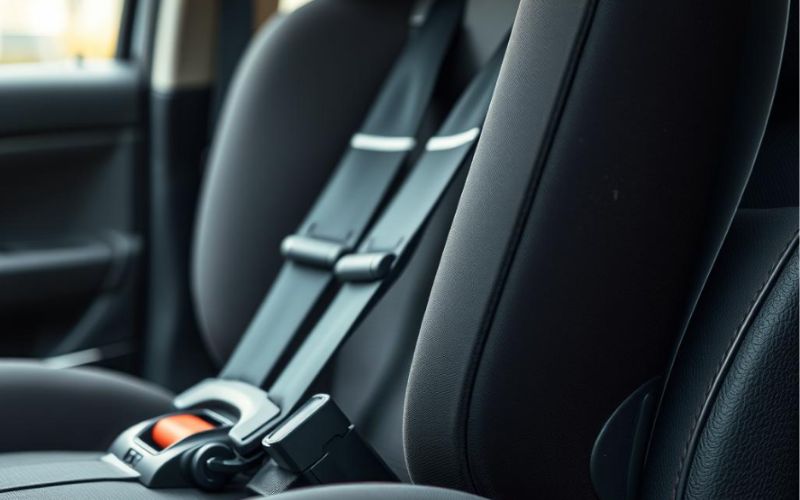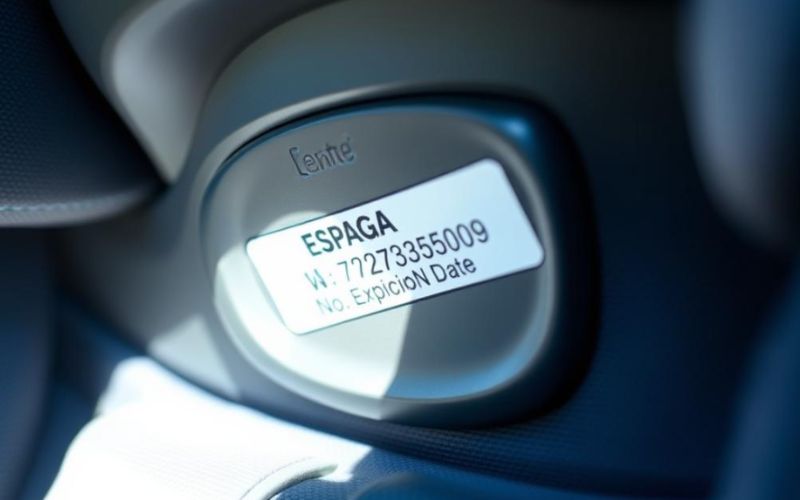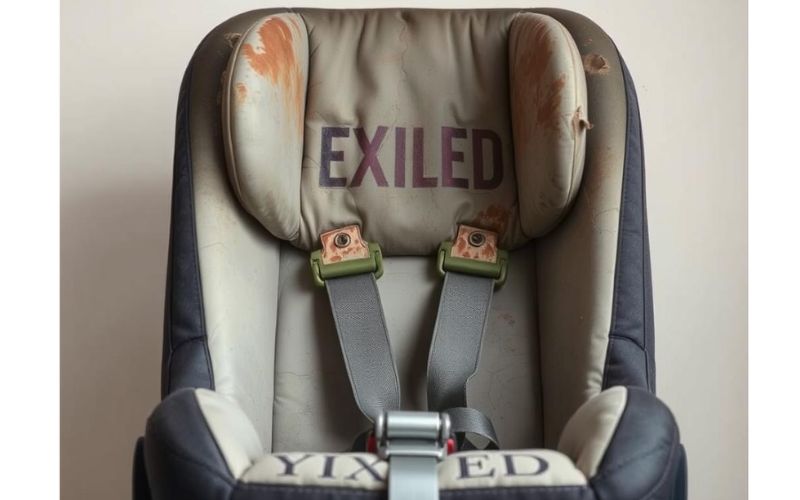As a parent, keeping your child safe in the car is key. Car seats are made to protect them in accidents. But, car seats have a limited time and an expiration date.
It’s important to know why car seats expire. The expiration date is not just a rule. It’s a safety rule that keeps your child safe.
This article will explain why car seats expire. It will also talk about why following these dates is important. And, it will tell you how to keep your child safe while driving.
Topic Summary
- The Reality of Car Seat Expiration
- Why Do Car Seats Expire? The Science Behind the Dates
- Case Study: Testing Expired Car Seats
- How to Find Your Car Seat’s Expiration Date
- Typical Lifespan of Different Car Seat Types
- Legal Implications of Using Expired Car Seats
- What to Do With an Expired Car Seat
- Conclusion: Prioritizing Your Child’s Safety
- FAQs on Why Do Car Seats Expire? Understanding Expiration Dates
- Why Do Car Seats Have Expiration Dates?
- How Do I Find The Expiration Date on My Car Seat?
- What Happens if I Use an Expired Car Seat?
- Are There Laws Regulating Car Seat Expiration?
- Can I Recycle My Expired Car Seat?
- How Long Are Different Types of Car Seats Typically Safe?
- Will My insurance Cover Damages if I Use an Expired Car Seat?
- How Do Manufacturers Determine The Lifespan of a Car Seat?
Key Takeaways
- Car seats have expiration dates to ensure safety and effectiveness.
- The expiration date is determined based on the materials used and the seat’s durability.
- Using an expired car seat can compromise your child’s safety.
- Regularly check your car seat’s expiration date and replace it when necessary.
- Understanding car seat expiration is key for your child’s safety on the road.
The Reality of Car Seat Expiration
Knowing when a car seat expires is key to keeping your child safe. Car seats protect kids in crashes, but they lose their power over time. This is due to many reasons.
What Does “Expired” Actually Mean For Car Seats?
When a car seat expires, it’s no longer safe and effective, the maker says. It might not work right in a crash. The expiration date is based on how long the seat lasts, including material wear and new tech.
How Manufacturers Determine Expiration Dates
Car seat makers test them a lot to find expiration dates. They check the materials, design, and how well they work over time.
Testing Methodologies
They use crash tests, durability checks, and material tests. These tests show how seats age and perform in different situations.
Safety Margin Considerations
They also think about how much impact the seat can take. Makers add a safety margin for real-world use. This ensures the seat stays safe for its whole life.

Why Do Car Seats Expire? The Science Behind the Dates
Car seat expiration dates are about material wear, new tech, and how much use they get. Knowing this helps keep your child safe on trips.
Material Degradation Over Time
Car seat materials change a lot over time. This can hurt their safety and how well they work. Things like sunlight, temperature changes, and normal wear play a part.
Plastic Component Breakdown
Plastic parts of car seats can get brittle and crack. This weakens the seat. Extreme temperatures and sunlight make it worse.
Harness and Strap Deterioration
Harnesses and straps also wear out. They lose strength and can’t hold a child tight in a crash.

Technology and Safety Standard Evolution
New tech and safety rules also lead to car seat expiration. Older seats might not be safe anymore because of new research and rules.
Wear and Tear Considerations
Using a car seat every day wears it down. It can’t protect a child as well in an accident. Checking it often helps, but expiration dates are key.
| Factor | Impact on Car Seat Safety | Mitigation Strategy |
| Material Degradation | Reduces structural integrity and restraint effectiveness | Regular inspection and adherence to expiration dates |
| Technological Advancements | Older seats may not meet current safety standards | Upgrade to newer models as they become available |
| Wear and Tear | Affects the seat’s ability to protect during accidents | Monitor for signs of wear and follow manufacturer guidelines |
Case Study: Testing Expired Car Seats
Researchers did a deep study on expired car seats. They tested them in labs and looked at accident data. They wanted to see how expired seats compare to new ones in safety.
Laboratory Testing Methodology
The lab tests mimicked real crashes. They checked if expired seats could absorb impacts well. The tests were done carefully to get fair results.
Crash Test Results Comparison
The crash tests showed big differences. Expired seats didn’t do as well as new ones in some key areas.
Impact Force Distribution Differences
Expired seats didn’t spread out impact forces well. This could mean more harm to kids.
Structural Integrity Findings
Expired seats didn’t hold up as well. They showed signs of wear that hurt their crash performance.
Real-World Accident Data Analysis
Looking at real accidents, expired seats were riskier. This shows why following

Knowing the dangers of old car seats helps parents keep their kids safe. It’s about making smart choices to protect them.
How to Find Your Car Seat’s Expiration Date
Finding your car seat’s expiration date is key to keeping your child safe. This date shows when the car seat is no longer safe to use.
Common Locations For Date Information
The expiration date is often found in a few places on your car seat. Look for it:
- The manufacturer’s label, usually on the back or bottom
- The user manual or instruction booklet
- The car seat’s packaging, if you have it
Decoding Manufacturer Date Formats
Car seat makers use different date formats. You might see a month/day/year, day/month/year, or just month/year.
Major Brand Dating Systems
Some car seat brands have their own ways of showing the date. For example, some use a serial number with the date. Others have a clear “Manufactured in” or “Expires on” label.
What to Do If You Can’t Find a Date
If you can’t find the expiration date, call the manufacturer’s customer service. They can tell you the car seat’s age based on its serial number or other details.

Typical Lifespan of Different Car Seat Types
Knowing how long your car seat lasts is key for your child’s safety. Each car seat type has its own purpose and lifespan. The materials, technology, and safety standards all affect how long a seat stays safe.

Infant Car Seats
Infant car seats are for newborns and small babies, up to 2 years old. They last about 6 to 10 years, based on the maker’s rules and the seat’s condition. Always check the expiration date, as safety standards and wear can change.
Convertible Car Seats
Convertible car seats work in both rear and forward-facing modes. They fit babies from birth to about 65 pounds. These seats usually last 7 to 10 years. They expire due to wear and safety rule changes.
Booster Seats
Booster seats help big kids who’ve outgrown forward-facing seats but are too small for adult belts. They last 5 to 10 years, based on the model and maker’s rules. It’s important to know when they expire to keep your child safe.
Legal Implications of Using Expired Car Seats
Expired car seats can cause big legal problems, like fines and being held liable. As a caregiver, knowing the legal side of expired car seats is key. It helps you follow the law and keep your child safe.
State Laws and Regulations
Car seat laws change from state to state. Some places don’t let you use car seats after a certain time or age. Knowing your state’s rules is important to stay out of trouble.
| State | Car Seat Expiration Law | Penalty for Non-Compliance |
| California | Car seats must be replaced after 6 years or according to manufacturer’s instructions | $500 fine |
| New York | Car seats must be used according to manufacturer’s instructions | $100 fine |
| Texas | Car seats must be replaced after 10 years or according to manufacturer’s instructions | $250 fine |
Insurance Coverage Concerns
Expired car seats can also affect your insurance. If you’re in an accident with an expired seat, your insurance might not cover it. This is because using an expired seat is seen as careless. Insurance often doesn’t cover damages from careless actions.
To avoid these problems, always replace your car seat when it’s time. Follow the maker’s rules and your state’s laws. This keeps your child safe and avoids legal and money troubles.
What to Do With an Expired Car Seat
You’ve checked the expiration date, and now it’s time to learn how to properly get rid of that expired car seat. Replacing an expired car seat is key for your child’s safety while traveling. It’s not just about getting rid of an old seat; it’s about using a car seat that meets current safety standards.
Responsible Disposal Methods
Disposing of an expired car seat needs some thought. Throwing it away isn’t the best for the environment. Try cutting the seat apart to make it unusable. Then, check with local waste management to see if they have rules for big plastic items or car parts.
Recycling Programs and Trade-In Events
Many makers and stores have recycling programs or trade-in events for old car seats. These help dispose of seats in a green way. Some give discounts on new seats for taking part. Look up local car seat stores or the maker’s site to find out about programs near you.
| Program Type | Description | Benefits |
| Recycling Programs | Manufacturer-led initiatives to recycle old car seats | Environmentally friendly disposal, possible discounts on new seats |
| Trade-In Events | Community events where you can trade in your old car seat | Safe disposal, possible incentives for new purchases |
Conclusion: Prioritizing Your Child’s Safety
It’s very important to know why car seats expire. This is because car seat expiration dates are set due to material wear, new tech, and how much they get used.
Using an old car seat can be dangerous. It might not protect your child well in a crash. Always check your car seat’s expiration date and follow the maker’s rules.
Following car seat safety tips and knowing when they expire can keep your child safe. Always check your car seat and get a new one when needed.
Learning about car seat expiration and acting early can make your child’s trips safer.
FAQs on Why Do Car Seats Expire? Understanding Expiration Dates
Why Do Car Seats Have Expiration Dates?
Car seats expire because their materials break down over time. They also need to keep up with new safety rules. The makers of car seats set expiration dates based on tests and safety margins.
How Do I Find The Expiration Date on My Car Seat?
Look for the expiration date on the back or bottom of your car seat. It’s usually on a label or in the manual. Different brands use different date formats, so you might need to figure out how to read it.
What Happens if I Use an Expired Car Seat?
Using an old car seat can be dangerous for your child. The materials might not be as strong, and it might not meet safety standards anymore. If there’s an accident, the seat might not protect your child well.
Are There Laws Regulating Car Seat Expiration?
Laws about car seat expiration vary by state. It’s important to know the laws in your area. This way, you can avoid legal and financial problems.
Can I Recycle My Expired Car Seat?
Yes, many companies and groups offer car seat recycling programs. These programs help reduce waste and are good for the environment. It’s a responsible way to get rid of old car seats.
How Long Are Different Types of Car Seats Typically Safe?
The safety time for car seats varies. Infant seats usually last 6-10 years. Convertible and booster seats can last 7-12 years, depending on the brand and model.
Will My insurance Cover Damages if I Use an Expired Car Seat?
Using an old car seat can make insurance claims tricky. If you’re in an accident, it might affect your insurance coverage.
How Do Manufacturers Determine The Lifespan of a Car Seat?
Car seat makers test them through crash tests and material checks. They also think about safety margins. This ensures the seat stays safe for as long as it’s meant to be.

